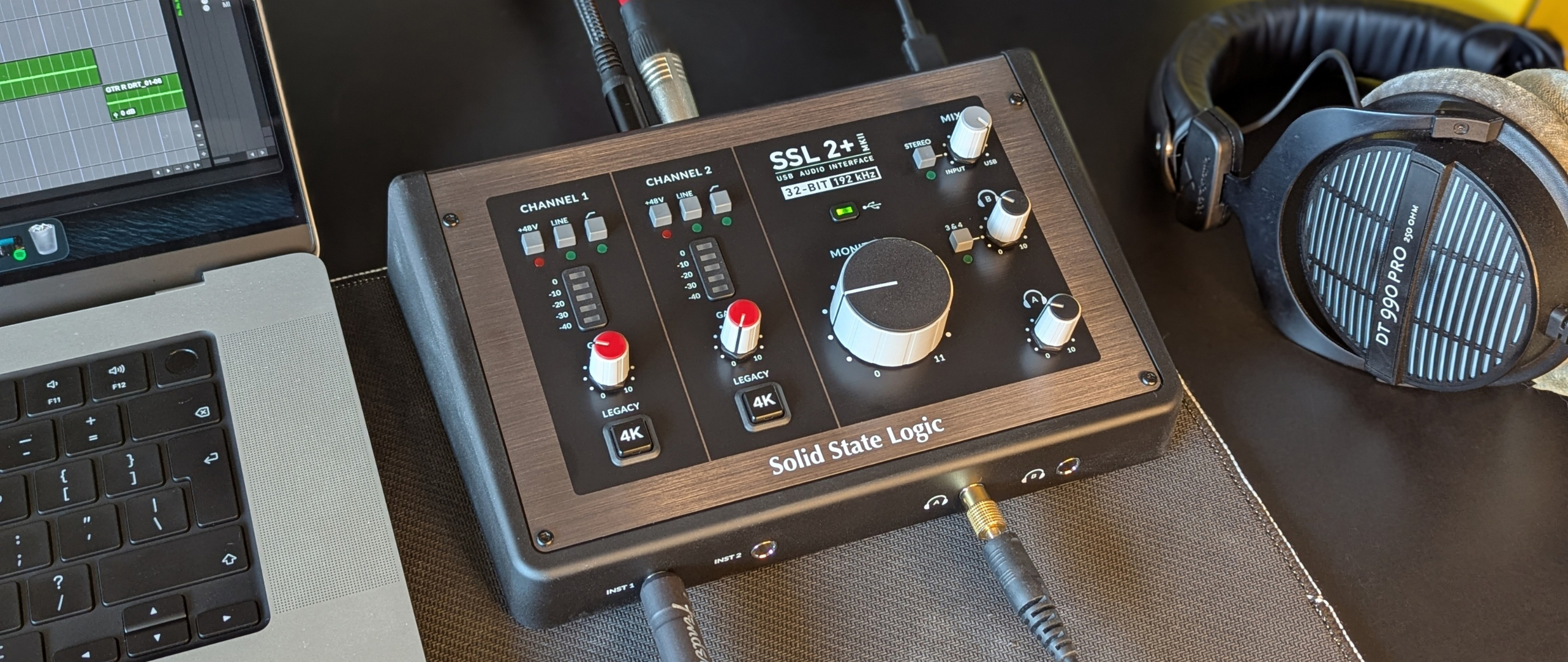MusicRadar Verdict
A superb audio interface for the modern musician that presents a supremely intuitive workflow and fantastic quality preamps. Despite the slightly plasticky feel it’s robustly built and has those signature SSL good looks and crystal clear sound.
Pros
- +
Really satisfying workflow.
- +
Ultra-clear preamp quality.
- +
Has that premium, SSL look.
- +
Plenty of connectivity options.
Cons
- -
Feels a bit cheap.
- -
Probably overkill for a solo musician.
MusicRadar's got your back
What is it?
It’s been just shy of five years since the launch of the first foray into home recording for studio legends SSL, with the very well-received SSL 2 and 2+ audio interfaces. The idea, to bring that mythical 4000 series console sound into the hands of us lowly home studio engineers who have neither the space, nor funds for the real deal.
SSL was playing catch-up at the time, with other studio stalwarts like Focusrite, Universal Audio, and Audient well ahead of the game in terms of their own interface releases. With the SSL 2+ MKII launch coming hot on the heels of Focusrite’s 4th Gen interfaces and the Gen 2 Apollo units, competition for space on home studio desks is similarly heated, so it will be interesting to see how it stacks up.
The SSL 2+ MKII features several improvements over the original unit, but at first glance, you’d be forgiven for thinking it’s the same but with a fresh paint job. The layout is nearly identical, with the individual channel layout staying the same, the same large monitor knob, dual headphone outputs, and a mix knob. The use of colour is slightly less judicious than the original, which gives it more of a modern flavour versus the decidedly vintage stylings of the MKI.
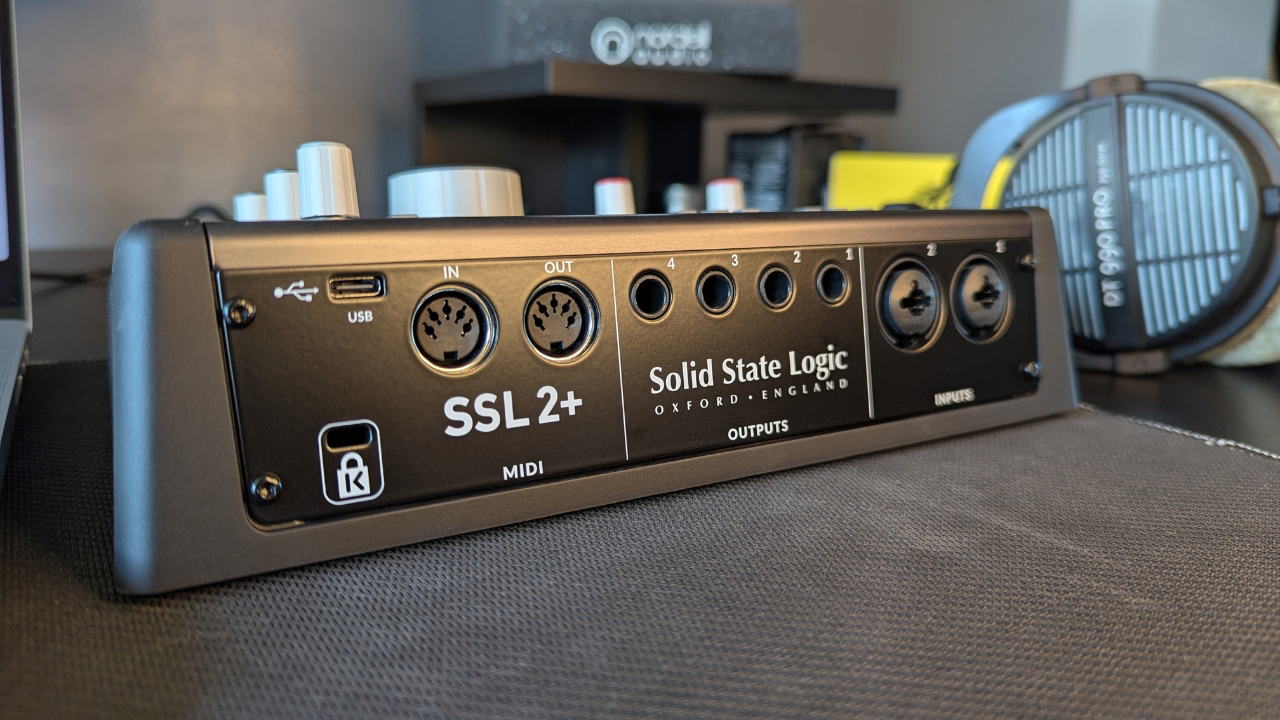
One addition to the channel selection is a high-pass filter button which allows you to cut the lows from your inputs straight at the source, handy if you’re using condenser microphones to record vocals. The front edge has also changed, with two instrument inputs and two separate headphone outs for easy access whilst it’s sat on your desktop. It’s very similarly laid out to the Apollo X4 Gen 2 I recently reviewed and have found to be very ergonomic sitting on my desktop.
The internals are different too, and it now features 32-bit/192kHz converters for supreme recording quality. The RCA outputs are gone, replaced by two extra 1/4-inch outputs that are now DC-coupled, a bonus for synth users who want to control their analogue machines digitally. It also now features USB-C connectivity, making connecting to the latest laptops for music production much easier than the previous.
Finally, there are some updates to the specification, with a much higher dynamic range of 120dB on the outputs versus the 112dB of the original. This has been similarly improved on the headphones outs, with the MKII hitting 119.5dB over the original’s 111dB, as well as an increase on the microphone inputs, with the new measure delivering 116.5dB where it was previously 110.5dB.
Build quality
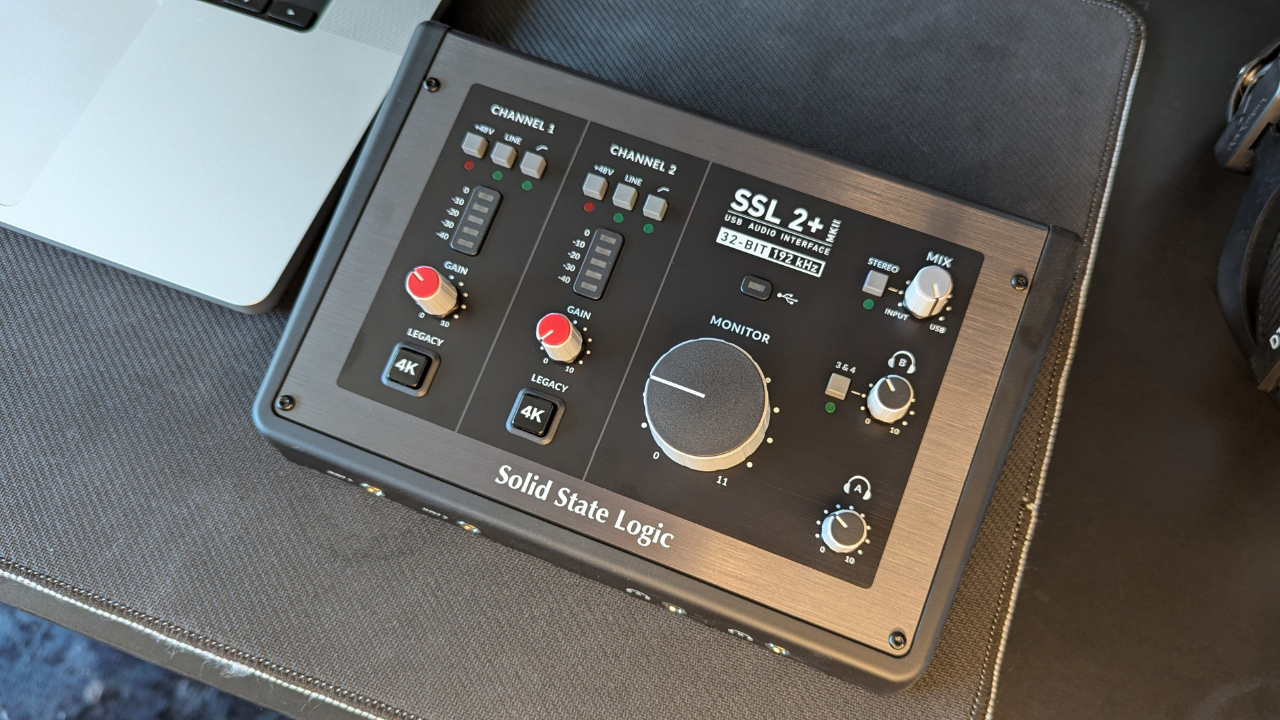
I’ve got to admit to feeling a little bit disappointed with the general feel of the SSL 2+ MKII. When I opened the box I cooed at its new aesthetic, it’s a stunning-looking bit of kit with those iconic SSL knobs feeling very 'pro studio'. The new blacked-out colour scheme feels like a marked improvement over the original in my opinion, but when I actually took it out of the recyclable packaging it left me feeling a little flat.
Versus the all-metal chassis of the aforementioned Focusrite 4th Gen and Apollo Gen 2 interfaces, it feels quite cheap and plasticky in your hands. It’s very lightweight, which might be a bonus if you’re travelling, but I couldn’t help feeling slightly let down by the feel, especially as it looks so ‘pro’.
Now that’s not to say it isn’t well put together. It does feel very robust in terms of the knobs, and I certainly wouldn’t worry about it getting broken taking it on the go, there’s just a bit of a disconnect between the look and the actual feel of it. Similar to the original, where you’d expect a satisfying and tactile click, pressing the buttons instead ends up feeling a little lackluster. There doesn’t seem to be any improvement on the 4K button either, which is a complaint our reviewer had about the MKI too.
Software & installation

Getting the SSL 2+ MKII set up with my new MacBook Pro M3, I proceeded to the SSL website to register the product and check out the additional software. The registration process requires you to create an account and use the serial from the bottom of the unit to register, giving you access to a whole host of software to add to your arsenal.
The first offer was a discount on the SSL 4K E plug-in which is a nice touch, and you also get a 3-month free SSL Complete Access Subscription. This auto-renews onto a $34.99 monthly subscription, so be sure to make a note to cancel if you don’t want to continue with it. You get DAW access via Harrison’s Mixbus 10 and Ableton Live Lite, perpetual licenses for SSL Native Vocalstrip 2 and Drumstrip plugins, 3-months access to Arcade by Output soft synth, Auto-Tune Unlimited, and Sonarworks SoundID Reference, as well as Melodyne 5 essential, BFD Player and Pop Essentials, and Amplitube 5 SE to cover your guitar tone needs.
It’s a plentiful bundle that will get any beginner musicians started, but probably won’t excite those with already existing plugin collections, although if you want to try out SSL Complete Access it’s a good way to do so. There weren’t any further steps required to get it working with my laptop, and loading up Pro Tools to begin recording a demo for my band I found it recognized the interface straight away, although I did have to set the inputs on my tracks which is usual when swapping an interface in Pro Tools.
Usability
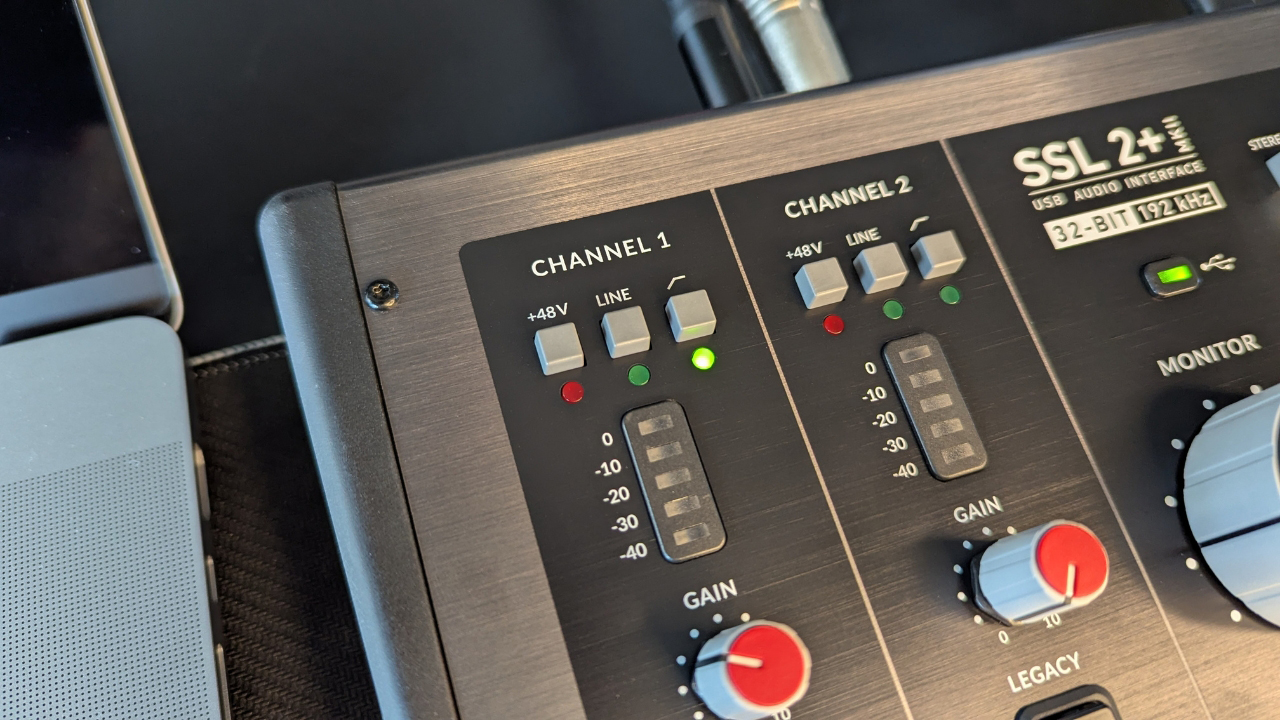
Using the SSL 2+ MKII is a breeze thanks to the positioning of the controls. I never felt like it was a hassle having to make tweaks and unlike a lot of other modern interfaces, it doesn’t demand you use a control app for the vast majority of features. Getting hands-on with the knobs works great for my workflow and I liked the fact the large monitor button is easy to manipulate, giving you plenty of fine control over your volume levels.
The placement of the instrument inputs on the front is great for guitar players like myself, as is the 5 LED metering system for monitoring your input signal without having to resort to using software to gain a good view of where your gain staging is at. I was able to quickly and easily record some bass and guitar for my latest tune, adding them to a pre-recorded drum track and pulling together a rough mix within two hours of unboxing it.
The mix knob seems to have been forgotten about on a lot of modern interfaces but I did end up finding it useful to be able to balance some of the direct input signal with the mix to keep my guitar tracking bang on time. It allowed me to get the right blend of direct tone and the synth pedal I’m currently using before hitting my amp simulator too, once again its easy, physical accessibility proving useful.
Overall, the fact that everything is so easily within reach of your hands made using the SSL 2+ MKII a real pleasure. I’m definitely the sort of person who prefers using physical controls over an extra software window on the computer, so it really suited my particular workflow and no doubt will suit those who prefer tactile controls over clicking a mouse button.
Sounds
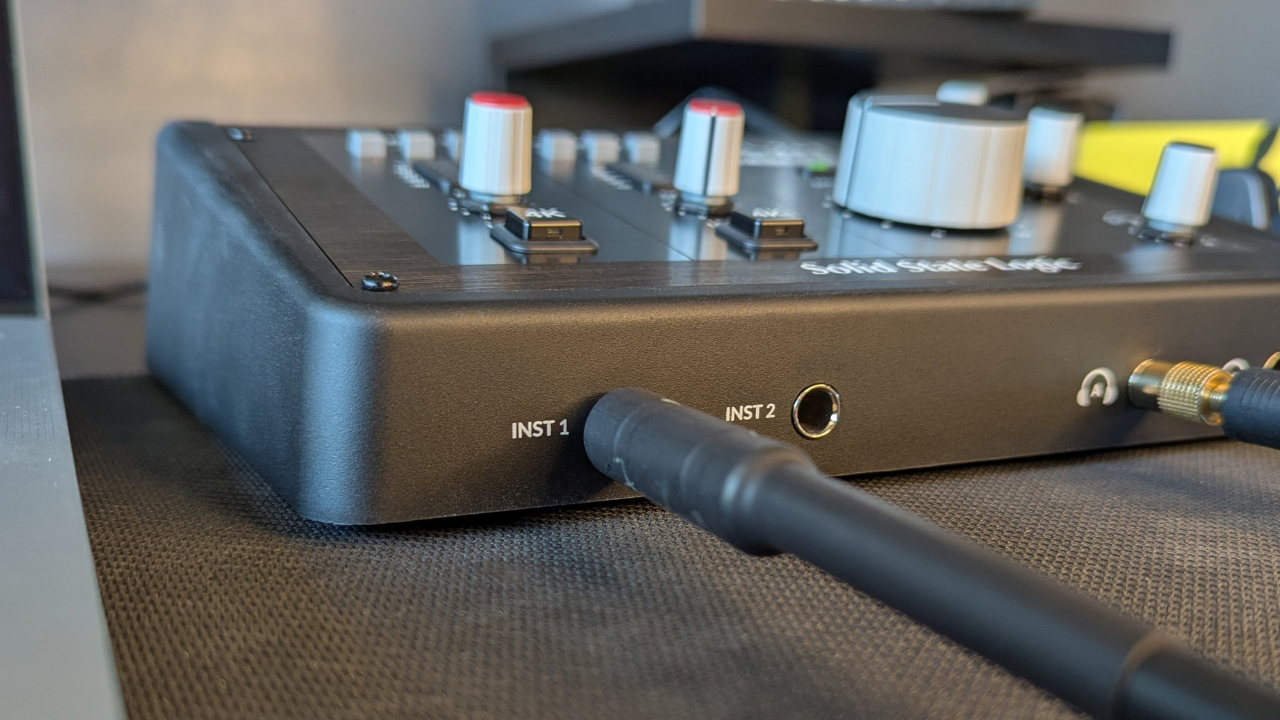
As I’ve stated many times previously, when dealing with the sound of an audio interface you’re entering very subjective territory. That said, I’ve tested around 15 interfaces in the past 12 months, and the SSL 2+ MKII definitely holds its own against the likes of Focusrite and Universal Audio.
The preamps delivered a super crisp sound that worked great with the DI guitar and bass I tested it on, giving a great base upon which to build my mix. With any recording project ultimately you’ll get what you put in, but the honesty of the preamps here is certainly a great springboard to bounce your latest project off. And what of the lauded 4K button? Well if you take a listen below you can hear it in action.
Using my Telecaster plugged straight into the instrument input of the SSL I played a chord progression for the DI sound. The second time around the 4K button is engaged which to my ear adds some gain, harmonics, and a little high-frequency EQ content. It sounds more ‘forward’ with the switch engaged which can be a great way to liven up a source before you commit to recording, particularly with vocals or an acoustic guitar.
Verdict
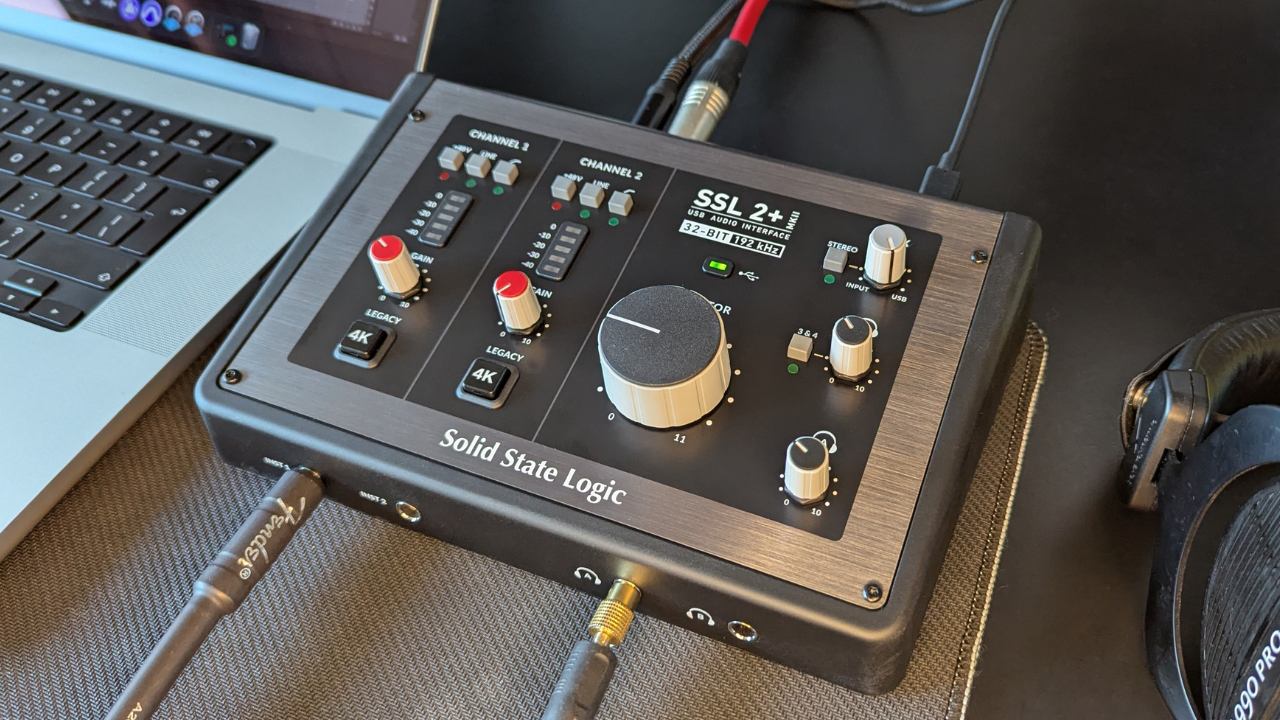
It’s honestly hard to find fault with the SSL 2+ MKII. It’s perfectly suited to the vast majority of home recording tasks, very usable thanks to the plethora of knobs and buttons, and delivers superb sound quality. Its real strength for me is the second in that list though, with all the controls in reach and not hidden behind menus or companion apps, it’s super easy to get up and recording quickly.
I was slightly disappointed with the physical feel of the unit, especially as it looks so premium at first glance, but I don’t have any qualms about the actual build quality of it. It’ll suit beginner and veteran engineers alike, and it is nice and lightweight which might make it a great option for the travelling engineer. Overall, a superb bit of kit that’s well worth your consideration if you’re looking for a new audio interface in 2025.
Specs
- Price: $299.99/£278/€298
- Simultaneous I/O: 2 x 4
- A/D Resolution: Up to 32-bit/192kHz
- Built In DSP/FX: N/A
- Number of Preamps: 2 x mic/instrument
- Phantom Power: Yes
- Analog Inputs: 2 x XLR-1/4" combo, 2 x 1/8"
- Analog Outputs: 4 x 1/4"
- Digital Inputs: N/A
- Headphones: 2 x 1/4" TRS
- Power Supply: USB-C
- Contact: SSL
Hands-on videos


Matt is a Junior Deals Writer here at MusicRadar. He regularly tests and reviews music gear with a focus on audio interfaces, studio headphones, studio monitors, and pretty much anything else home recording-related. Matt worked in music retail for 5 years at Dawsons Music and Northwest Guitars and has written for various music sites including Guitar World, Guitar Player, Guitar.com, Ultimate Guitar, and Thomann’s t.blog. A regularly gigging guitarist with over 20 years of experience playing live and producing bands, he's currently studying Sound Engineering and Music Production at Spirit Studios in the UK.
“Excels at unique modulated timbres, atonal drones and microtonal sequences that reinvent themselves each time you dare to touch the synth”: Soma Laboratories Lyra-4 review
“I used everything I knew about music”: How Green Day exceeded expectations with their most ambitious song
YouTube just added AI tools that makes musicians, library music and video editors redundant
